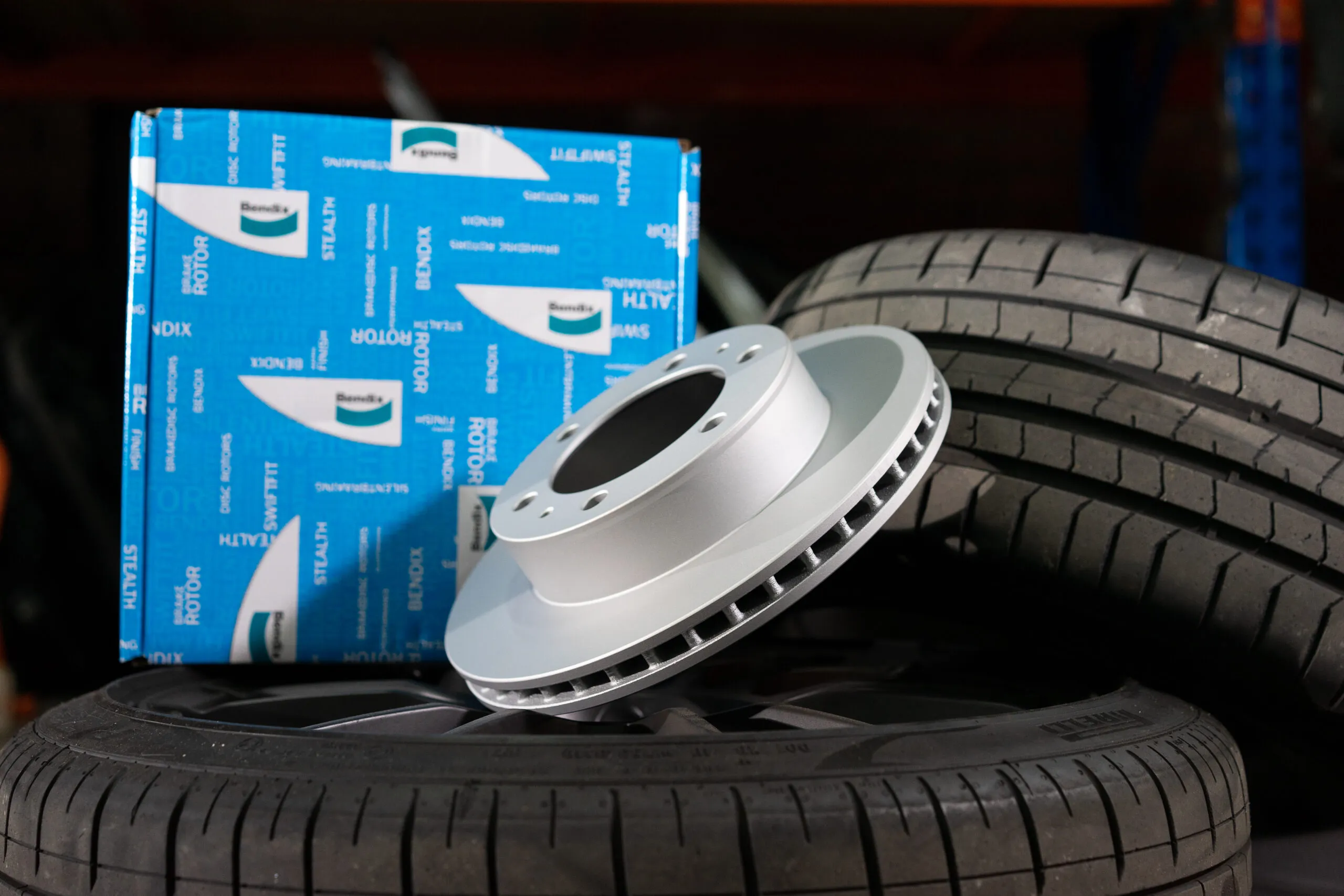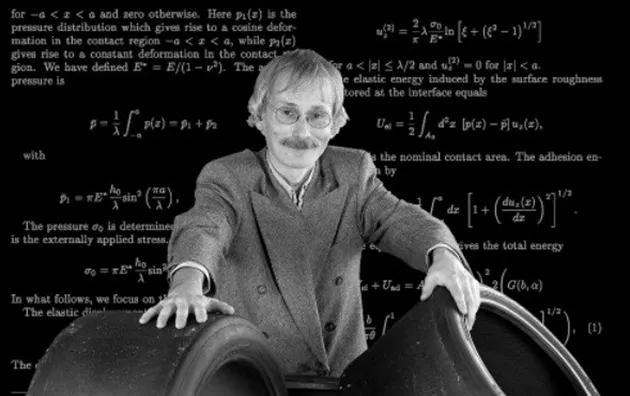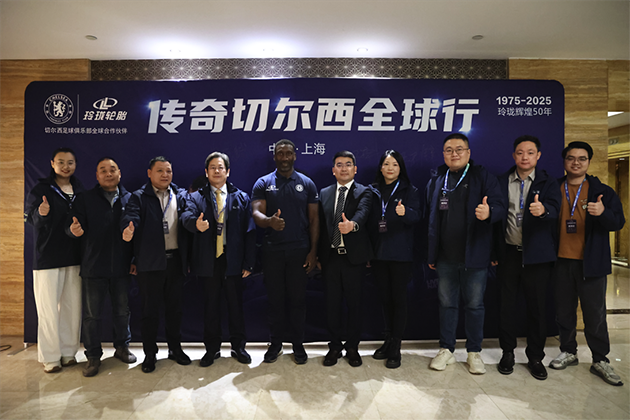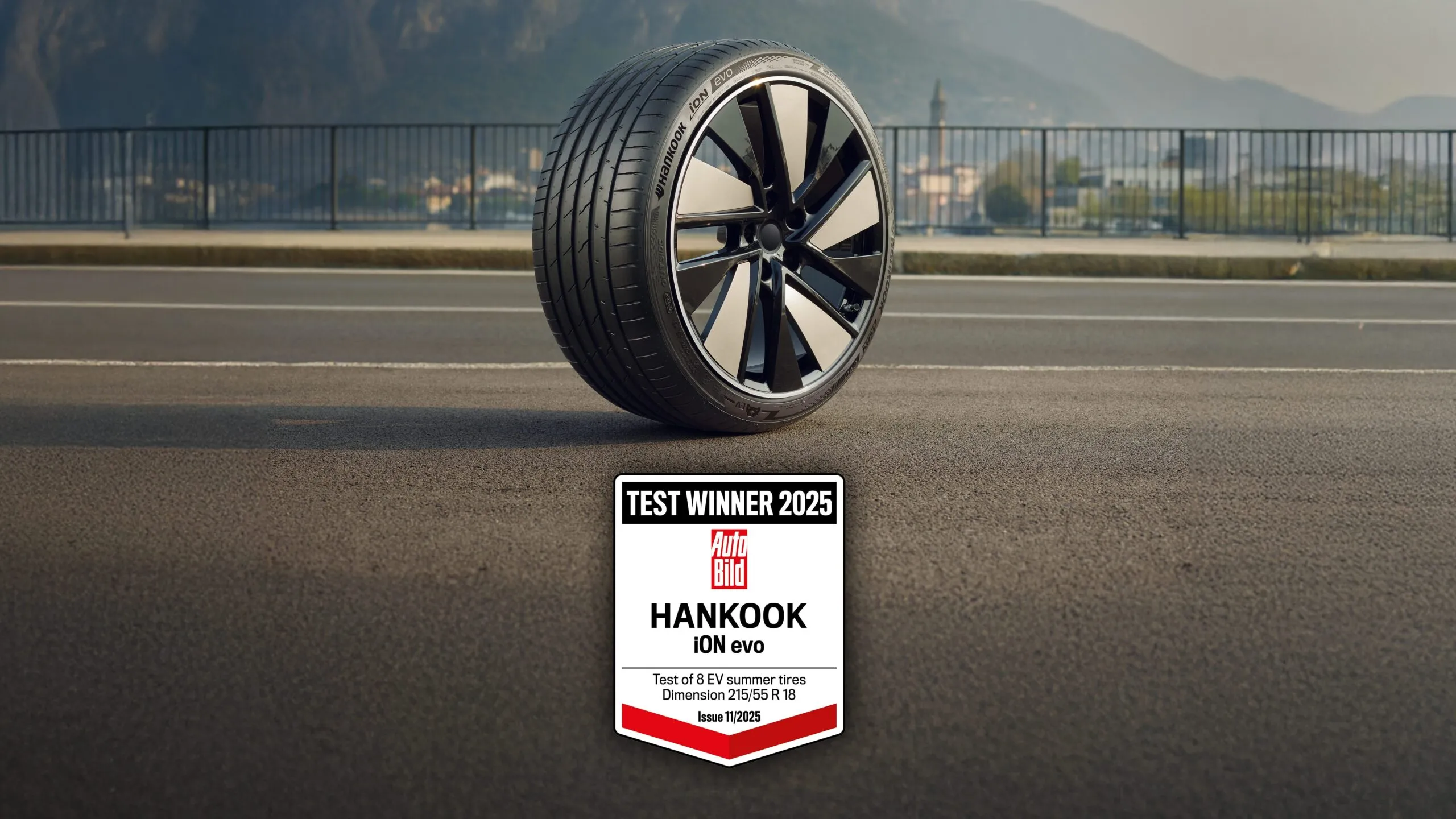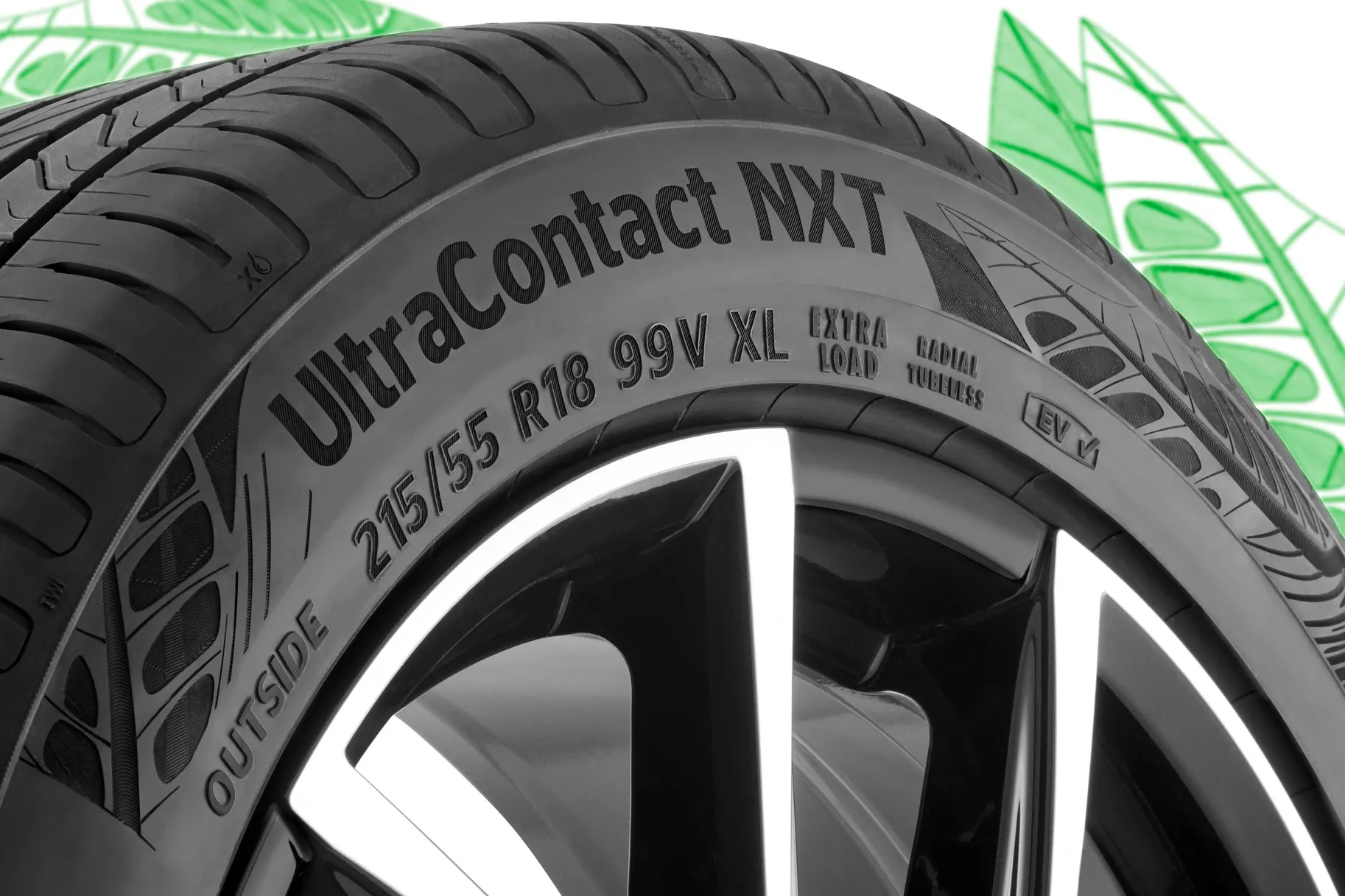Bendix explains that the friction material used in a brake pad could reduce noise.
Bendix Provides Insights on Brake Noise
One of the biggest mechanical annoyances is brake noise. What is it? Broken down into basic science, it means that under braking, something is vibrating at a frequency high enough to make you notice there’s ‘noise’.
Brake Noise – Collective System Inspection
While contact between the rotor and pad is the main instigator of brake noise, it is not the only component at fault. Bendix says low frequency oscillations from the pad and rotor travel through brake and suspension components while higher frequencies tend to remain at the pad/rotor, which leads to the passenger compartment, resulting in detectable noise when a natural frequency of the components is reached. This connected parts vibrating is the cause of the noise. Let’s check out each brake component and see how these vibrations could be reduced.
Brake Pads
Bendix explains that the friction material used in a brake pad could reduce noise in two ways. A good brake pad compound that keeps friction coefficient consistent across a range of temperatures and environmental conditions tends to be quieter. By maintaining consistent friction coefficients, variations in brake torque are reduced, therefore reducing the possibility of noise.
Some brake pads such as the Bendix General CT transfer a film of friction material on the rotor surface. This protects the rotor surface so that under braking, there is minimum change of brake torque as pads come into contact with hot spots. Normally, this film is generated during the bedding-in procedure. However, Bendix says its Blue Titanium Stripe means you could drive straight on the road and get instant pedal feel and stopping power, while reducing brake noise.
Checking Each Component : Rotors
Many mechanics are quick to blame brake pads as a source of noise but actually, Bendix says, most of the noise is caused by the interaction of the pad and brake rotors. The brake rotor is regarded as an unchanging factor when it comes to brakes, when in reality it could be altered as brake pressure and heat are applied. Rotors could actually move and flex as brake force is applied, invisible to the human eye. This movement causes noise and excitation at friction coupling; that is when brakes are applied. The brake noise is also increased if the rotors have poor metallurgy and differ from the OE design.
Bendix also noted that the smoothness of the rotor surface matters as well when it comes to noise prevention. When reusing brake rotors, it is very important to machine them, using a good condition lathe for a proper smooth finish. Alternatively, you could replace with Bendix SwiftFit Brake Rotor.
Brake Shims and Insulators
Brake shims are key in controlling noise. First, they reduce transmission of vibrations from the pads and rotors to other brake components. Most shims supplied with Bendix brake pads are covered with fibre reinforced rubber coating, which dampens vibrations ‘incredibly well’ compared to non-coated shims. In Bendix’s performance brake pads, the supplied shims are coated with nitrile, which adds more heat resistance. Secondly, shims add mass to a brake pad, causing vibrations to lose energy and reduce noise-causing frequency levels. Last but not least, shims act as a thermal barrier to help spread heat evenly across the face of the brake pad, ensuring consistent brake torque. Bendix says its brake shims are made from carbon steel, which has low thermal conductivity and are designed to last the lifetime of the brake pads.
Lubricants
Lubricant is extremely important in a braking component system. Not only do they allow calliper pins to work efficiently by applying them on calliper fingers and between shims and brake pads, it forms another barrier that further dampens vibration under braking. However, Bendix says only lubricants such as its Ceramasil Brake Parts Lubricant should be used. This is because Bendix’s lubricant uses a formula that does not break down under extreme heat and pressure generated by brakes. It also does not contain petroleum, which causes boots and seals to react and fail prematurely.
Bendix’s advice on ensuring the vehicle’s brakes are quiet and effective is to use its products for every brake pads replacement at the workshop. For more info, email Bendix representative at sales@fmpauto.com.my
技术通报:深度了解刹车噪音 — 原因和预防
刹车噪音是最大的机械烦恼之一。它是什么?以最基本的科学来解释就是在刹车时,某些东西以足够高的频率在振动,让你察觉到有“噪音”。
刹车噪音—-集体系统检查
刹车噪音重要来自刹车盘和制动片之间的接触,但它并非是唯一造成噪音的部件。 奔德士说刹车片和刹车盘所产生的低频振荡会穿过刹车片和悬挂部件,而较高的频率则将保留在刹车片/刹车盘里并进入轿车厢,在达到组件的固有频率时带来可分离的噪音。这个连接的零件振动就是噪音的来源。现在让我们来探讨每一个刹车组件,看看如何降低这些振动。
刹车片
奔德士解释说,刹车片所使用的摩擦材料可通过两种方式降低噪音。在一定的温度范围和环境条件内,可保持一致性摩擦系数的良好刹车片复合物会比较安静。保持一致性的摩擦系数,会降低刹车振动扭矩,降低噪音。
有些刹车片如奔德士General CT将摩擦材料膜转移到刹车盘表层。这个能够保护刹车盘表层,在刹车时的当儿,也就是当刹车片与热点接触时能够将刹车扭矩变化最小化。这层摩擦膜一般是在磨合程序中产生的。然而,奔德士表示其蓝色钛条纹(Blue Titanium Stripe)刹车片,能够让用户直接在道路上行驶,在降低刹车噪音的同时,马上取得刹车板感觉和刹车力。
检查每一个组件:刹车盘
奔德士说,很多技师会抱怨说刹车片是噪音的来源,实际上大部分的噪音是因为刹车片和刹车转盘之间的相互作用所造成。谈到刹车片,刹车盘被认为是不变的因素,实际上在受到压力和热力下, 它是能够加以修改的。在刹车时,虽然肉眼看不见,刹车盘能够真正地移动和弯曲。这个活动在刹车时将导致噪音和刺激摩擦耦合。当刹车盘冶金不良时或与原产配备设计不同时,刹车噪音也会增加。
奔德士也注意到防止噪音与刹车盘表层的光滑度有关。在重新使用刹车盘时,用机器打磨光滑后再使用是重要的。因此,应采用一个良好的车床打磨,以取得适当的光滑度。或者,可以采用奔德士SwiftFit刹车盘来替代。
刹车垫片和绝缘子
刹车垫片是控制噪音的关键。首先,它们将振动降低并转移到刹车片和刹车盘,以及其他的组件上。大部分与奔德士刹车片一起供应的刹车垫片都具有纤维增强橡胶涂料覆盖,比那些没有涂层的拥有更好的抑制振动能力。与奔德士性能制动片一起提供的刹车垫片拥有腈涂层,具有更好的抗热能力。第二,垫片能够提高刹车片的质量,导致振动能量的损失,降低导致噪音频率。最后,垫片可以当成热障 ,协助将热量均匀地散布到整个刹车片上,确保一致性的刹车扭矩。奔德士表示,其刹车垫片是采用碳素钢制成,导热系数低,而且其设计能够延长刹车片的使用寿命。
润滑油
润滑油对刹车部件尤为重要。将润滑油施放在制动支架(calliper fingers) 和垫片与刹车片之间,不仅让制动卡钳能够有效地运作,还可进一步抑制刹车时的振动。然而,奔德士说只应使用Ceramasil刹车零部件润滑油,因为奔德士润滑油采用的配方不会在刹车产生的极端热力和压力下发生故障。它不含石油,不会影响密封橡胶套,导致它过早失效。
为确保车辆刹车器安静和有效,奔德士的建议是每次在修车厂更换刹车片时都采用其产品。更多有关的信息,请电邮sales@fmpauto.com.my 奔德士代表 。

